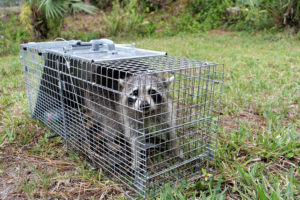Effective ways of getting rid of raccoons in the attic
Typically found in urban areas, there’s no surprise that raccoons are seen often. However, these animals can be a nuisance, especially if you find them living in your attic. Raccoons can tear up insulation, ruin open air ducts, destroy pipe insulation, and are a serious health threat.
Homeowners often report hearing noises above the ceiling or in the walls; this is a tall tale sign that you may have a raccoon in your attic. Most of the time you’ll find raccoons in the attic because they are looking for a nesting place or already have – so, if you see a raccoon in your attic, there is usually a nest of baby raccoons nearby. Here are some useful ways that will get rid of raccoons and keep them at bay:
- Capture the raccoons and relocate them
- Clean up the raccoon mess left behind
- Find and seal up any raccoon entryways leading to the attic
- Call professional exterminators
Capture the raccoons and relocate them
Since raccoons can be very aggressive, we highly suggest not trying to capture a raccoon on your own. This is especially pertinent if the raccoon is a mother caring for its babies. Instead, it is strongly recommended that a professional pest management company be contacted.
Furthermore, there are laws in some states stating that only professionals can remove raccoons; some states don’t allow the removal of pregnant raccoons. For those living in Texas, The Texas Parks & Wildlife states that it’s okay for landowners to capture nuisance fur-bearing animals on their land. However, it is a Class C misdemeanor to transport raccoons from, to, or within the state, unless you’re a licensed professional by the State of Texas. For this, we recommend reaching out to a local pest management professional, like The Bug Master.
If you are willing to take on the task of capturing a raccoon head-on, we suggest wearing heavy-duty gloves when removing the raccoons. If there is an entire family present, it is then advised to use a litter of raccoons as live bait to lure the mother into the live cage trap using a trap divider. The trap divider keeps the litter in the cage and away from harm whenever the trap is triggered — make sure the cage is large enough, at least 32 inches long. Using this method is the safest and most effective way to capture raccoons in the attic.
Are raccoons keeping you up??
Our pest control experts will make sure your home is raccoon-free.
Clean up the raccoon mess left behind
Raccoons are generally messy rodents, and they often leave their mess behind once removed from the attic. Both the rodent and their feces can carry several diseases, like roundworm, leptospirosis, salmonella, and rabies. Unfortunately, with droppings usually scattered everywhere, they are highly dangerous to humans, even pets. That is why it’s imperative to wear a professional respirator and gloves while cleaning the attic. Homeowners should especially follow the guidelines established by the CDC when conducting a cleanup project, to protect themselves.
Additionally, raccoon urine can also be found scattered everywhere in the attic. Raccoons sometimes urinate onto wood, drywall, and insulation. The urine is often absorbed, leaving the homeowner no choice but to replace it. Unfortunately, wood and drywall are a lot harder to replace, as leftover urine or waste in these places will continue to produce foul smells over time. However, a wildlife specialist will use the proper tools and sanitizing products to fog or spray the attic, sterilizing the area and killing any harmful pathogens that are left behind.
Find and seal up any raccoon entryways leading to the attic
Capturing raccoons is only half the battle, as homeowners still need to find the source of entry. Fortunately, entryways for attics are usually found on or near the roof. Due to a raccoon’s size, entry points need to be at least three inches in diameter — lookout for the following areas as a raccoon’s entryway:
- Underneath dormers
- Chimneys
- Nooks and vents that are broken
- Roof pipes
- Areas littered with raccoon urine and feces (resembles dog feces)
- Areas with food scraps or damage to you’re the home
For these entryways, we recommend using wire mesh, sheet metal, metal flashing, expanding foam, or caulk to cover up all points of entry. The Humane Society recommends mainly using wire mesh, at least 16-gauge material (about 0.06 inches in diameter) with ½-inch openings for the best results.
Call professional exterminators
The most effective way to completely remove raccoons in the attic is to call a pest management professional. Here at The Bug Master, we not only take care of your raccoon problem in your attic but also prevent other pests from entering your home. We inspect, trap, enclose, and relocate all pests! Contact us today for a free estimate and learn more about our services — we’ll end any pest problem before it becomes a dangerous situation
Get A Free Pest Control Quote
Are raccoons keeping you up??
Our pest control experts will make sure your home is raccoon-free.

